Thirty years ago I saw Donizetti’s Don Pasquale for the first time. I remember only one thing about that performance: I disliked it. I use the word intentionally. I didn’t just fail to enjoy it, I actively disliked it. I’ve done a little sleuthing in my own records and on the Met Archives web page and deduced that the performance I saw was a PBS rebroadcast of a Met Live TV broadcast. In the early 1980’s I sat in front of my small-screen TV set and watched many operas. I enjoyed almost all of them, despite the fact that they were technically far inferior to today’s HD theater performances. This was the only one I disliked. Why?

It certainly wasn’t Donizetti’s music, which is always delightful, and I’m sure it wasn’t the Met orchestra. It certainly wasn’t the singing or the acting of the cast led by Beverly Sills and including Gabriel Bacquier”�, Alfredo Kraus, and H�kan Hageg�rd.
No, the problem is the plot. Here is this pleasant old man, Don Pasquale, who’s close to 70. He’s gotten a little foolish in his old age – perhaps he was never very bright – but he’s basically a real nice guy. When I first saw Don Pasquale I wasn’t all that far from his age. I really identified with him and didn’t think that the indignities and ridicule to which he was subjected were the least bit funny.
Then there is his ne’er-do-well nephew, Ernesto, who never did a day’s work in his life. He’s been more than happy to live all of his 20-some years on his uncle’s generous allowance, but is rudely contemptuous of the old man whenever Uncle wants to have a conversation. Granted that Pasquale goes too far when he attempts to dictate the choice of bride for Ernesto, but surely one should at least try reason before participating in the fiendish plot to destroy the old man’s self-esteem.
The third male lead in Donizetti’s opera is the aptly named Dr. Malatesta (literally “bad outer covering” in Latin). This two-faced rat is Don Pasquale’s physician but is not in the least concerned with his patient’s well-being. Instead he concocts his Satanic scheme to debase and swindle his patient for the benefit of his buddy Ernesto.
Saving the best for last, consider that out-and-out selfish despicable gold-digger, Norina. There is absolutely nothing good that can be said about her – except that she is young, she is beautiful, she has a lovely voice, and she bubbles over with infectious good humor.
Donizetti and his librettist do try to pay lip service to the idea of humanity. At one point near the end Norina says she feels sorry for the old man, but she immediately negates this humane thought by adding, “But our plot must succeed.” And at the finale Pasquale has a sudden epiphany and laughs at himself for thinking that an old man like himself could possibly be happy with a young bride. With a big smile he says, “I’m glad you tricked me out of half my fortune and let’s all be one happy family so they can bring down the curtain and I can go home.” [That last bit wasn’t in the supertitle, and I don’t speak Italian, but I’m pretty sure that’s what he said.]
Well, have I convinced you to NOT go to the Encore performance on Wednesday, December 1 2010 at 6:30 local time? I hope not, because it is a wonderful performance and I am definitely planning to see it again. “Huh?” you ask. “How can you want to see it again when the story is so distasteful?”
The secret to thoroughly enjoying Donizetti’s opera is to see the four characters as cartoons – not as real human beings. When Charlie Brown falls for Lucy’s trick one more time, he is not a real person – his skull is not going to crack when he hits the ground. We can laugh when Dagwood’s boss sends him flying by booting his rear end. We can laugh when Wile E. Coyote gets squashed flat by a speeding truck. So, I shall restart my review about a great performance by some hilarious cartoon characters.
Maestro James Levine, in his 40th year of conduction at the Met, comes to the podium and the orchestra begins the overture with one of the loveliest melodies in all opera. Oh, it is so haunting familiar. What is it? What is it? It sticks in part of my mind all through the overture; it keeps popping into my head at odd moments in Act 1 – and in Act II. I hum it to myself during intermission.
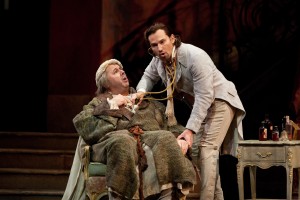
Intermission already? Slow down. I haven’t even got the curtain up. In Act I Scene 1 Don Pasquale explains to his physician Dr. Malatesta that he wants to marry a young bride and have an heir to spite his nephew Ernesto who refuses to marry the woman his uncle chose. Dr. M says, “Great idea. I’ve got just the bride for you, my sister Sofronia.” “Bring her on,” says Don P.
Things get really lively in Scene 2 when Dr. M asks Norina to pretend to be his sister Sofronia. She’s to be shy and demure until she hooks Don P in a fake marriage. She then turns into a violent shrew until the Don begs for mercy and they can strike a deal. Norina loves the idea and literally jumps for joy. She also runs, twirls, and dances for joy and even turns a somersault! Anna Netrebko is having the time of her life in this scene. What’s more, Mariusz Kwiecien is keeping up with her. Donizetti must have had these two in mind when he wrote the music. The whole scene was so delightful that most of the audience was chuckling – and I wasn�t the only one with an occasional LOL.
We go into Act II without an intermission. Our laugh muscles can relax while Ernesto sings a lovely lamentation, but they get right back to work when Dr. M introduces the oh-so-shy “Sofronia”. Don P is enchanted: “Bring on the Notary.” “Here he is,” says Dr. M. The fake papers are signed, the fake Notary says, “It’s official; you two are man and wife,” and
Presto! Netrebko whips off her modest shawl, trades her simpering smile for a vitriolic tongue, and announces, “I am running this household now.” In 30 seconds she spends more of his money than the Don has spent in 30 months – probably more than in 30 years. She orders more servants, more horses, more carriages, new furnishings, new clothes, etc., etc., and etc. Poor Don P doesn’t know what hit him. He reels and totters until he is saved by the bell – er, I mean the curtain.

But after an intermission we find that “Sofronia” has been unrelenting in making her “husband” miserable. She has hired Ernesto as her personal servant and he is about to escort her to the opera. Don Pasquale makes a final desperate attempt to bar her way, but she slaps his face and sweeps out, smoothly dropping a note on the floor with details of an assignation in the garden that evening. “Aha,” he says to Dr. M. “We’ll catch them red-handed and she’ll have to give me a divorce.” Need I say that his finding the note was part of the plan?
Scene 2, the Garden. Ernesto appears first and at long last we hear again the haunting melody that began the overture: it’s Ernesto’s serenade to his love. Utterly entrancing, and over all too soon. The plot plays itself out, Don Pasquale has his epiphany and observes that “marriage is not for an old man.” The four cartoons live happily ever after, the audiences walk out humming, singing, smiling, laughing – at least for a few moments we, too, live happily ever after.
Follow the advice of The Opera Nut and put Wednesday, December 1 2010 6:30 pm local time on your calendar. Your last chance!
Photos: Except where otherwise specified, solo photos of Anna Netrebko and James Levine are by Ken Howard/Metropolitan Opera, and other photos are by Marty Sohl/Metropolitan Opera.
This review by Philip G Hodge appeared in sanfranciscosplash.com on November 23, 2010.



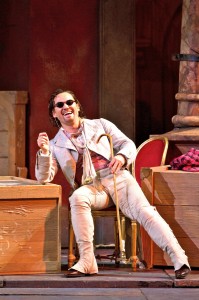
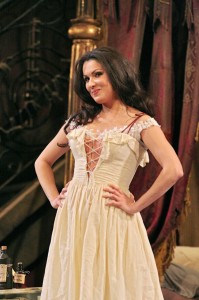
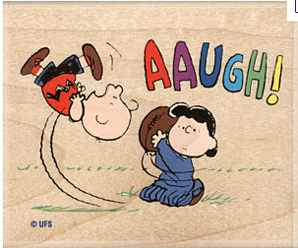


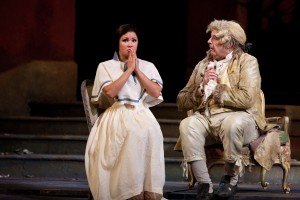
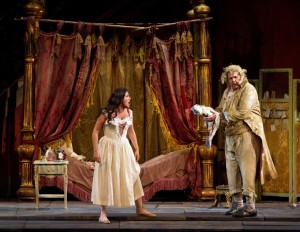
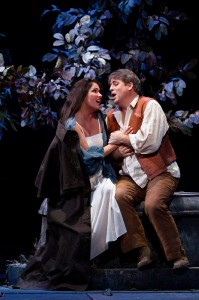
I also loved this ENCHANTING performance! Sue